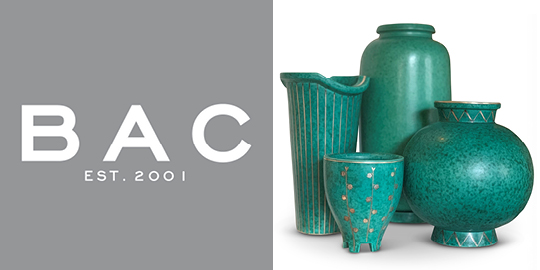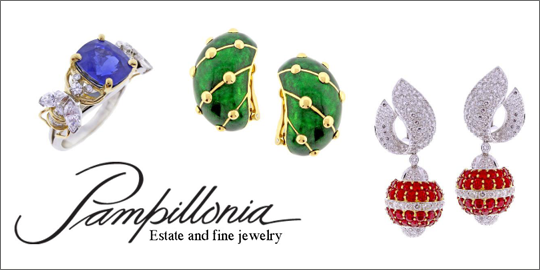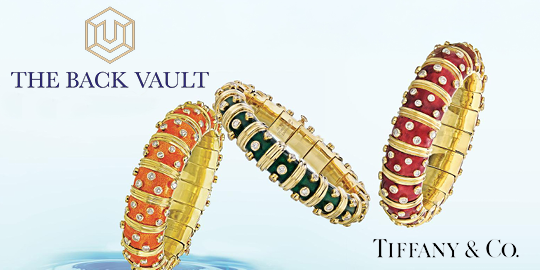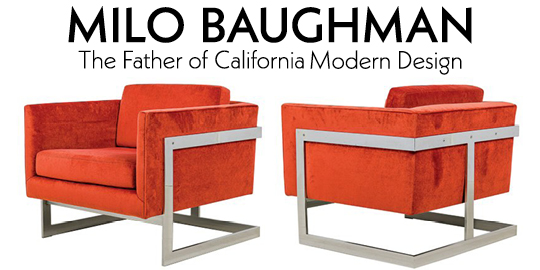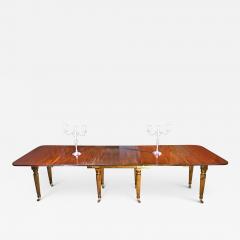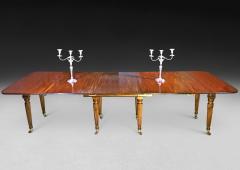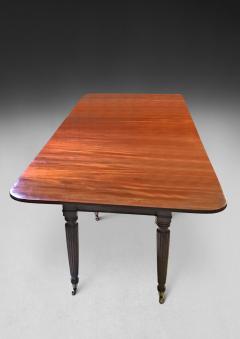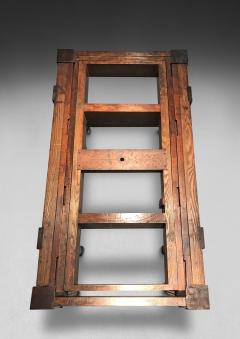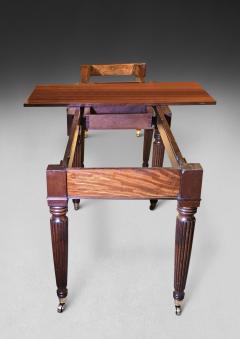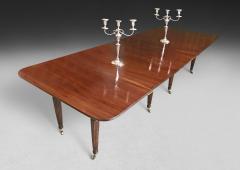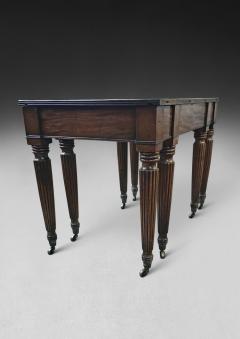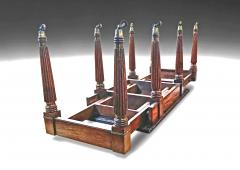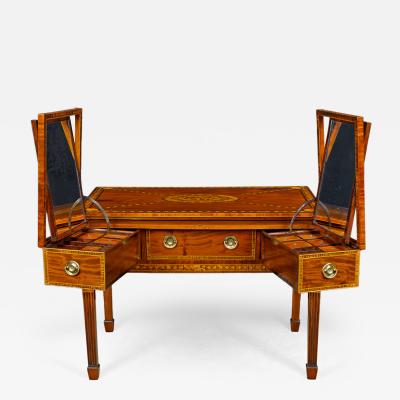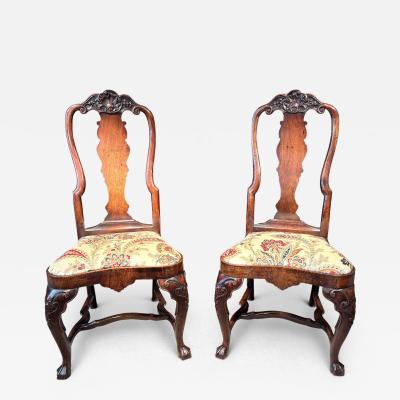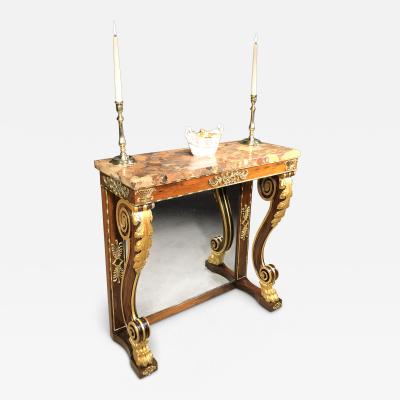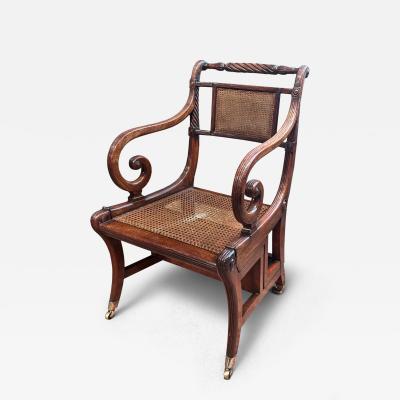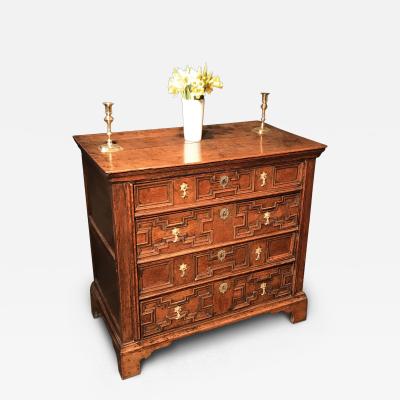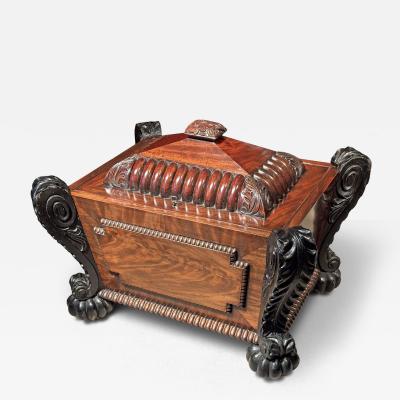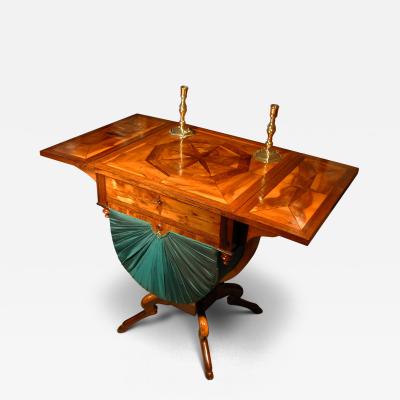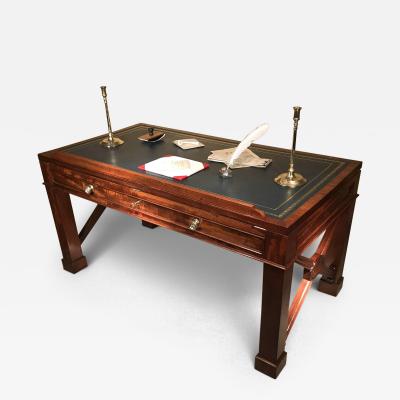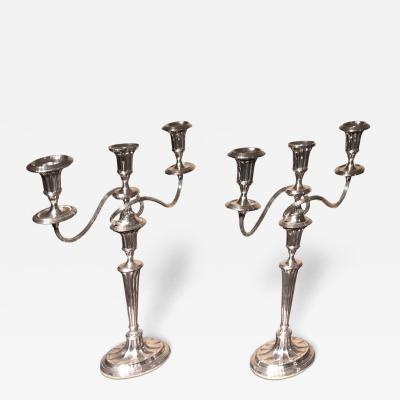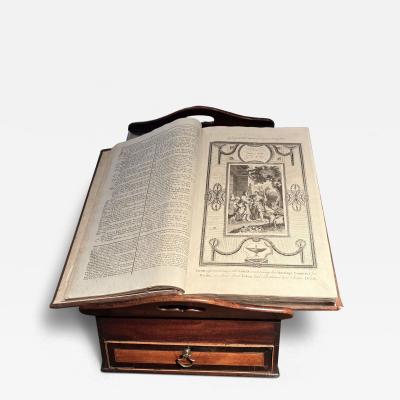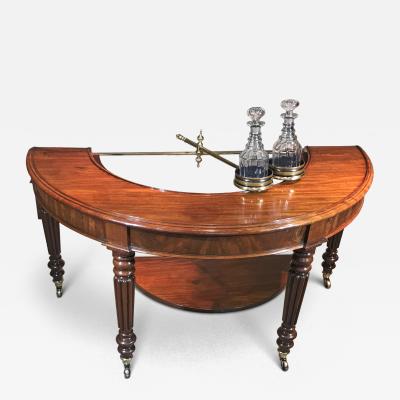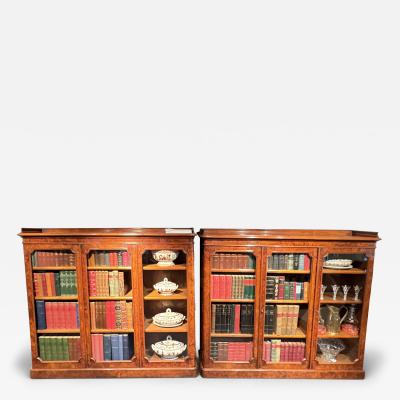Listings / Furniture / Tables / Dining Tables
Gillows Patent Mahogany Extending Dining Table
-
Description
No: 11167
An extremely rare and important George III Period Mahogany Extending Dining Table patented by Gillows in 1800. This unique design has the advantage of a rotating centre leaf so it can be used as a serving or side table when not being used for dining at. The original design is in the Gillows work books and is the forerunner of the Imperial Dining Table which superseded this example by 1805. It has retained all 5 original leaves and is a spectacular run of solid mahogany when opened measuring 122”, 310cm x 46”, 117cm. The telescopic bearers are supported on 8 ring turned, tapered and reeded legs terminating in Brass cups and castors.
Height: 29.25”, 74 cm Closed 25”, 63 ½ cm X 46”, 117 cm.
Circa 1800
Price: £15,000-00p.
Note: See Susan Stuart, “Gillows of Lancaster & London 1730-1840” Vol I pp.240-242, Plates:234-239.
The image from the Gillows Archives at Westminster Central Libraries shows the firm’s first design for a patent extending dining table ordered by Lord Strathmore in 1801. The patent had been granted to Richard Gillow II in 1800.
Last year at an Antiques Fair we sold a piece to a client who told us he was thinking of selling his extending dining table and would we care to view it at his home. The centre part was being used as a serving table and alarm bells started ringing. It just looked so familiar!.
Although this image is upside down to show the mechanisms, it is virtually identical to that shown in the 1801 drawing. The 8 legs, reeding, rotating block, brass cups and casters are all identical along with the "disposal of the slides to support the leaves". The object of the patent no. 2396 was “calculated to reduce the number of legs and pillars and claws in the construction of dining and other tables, and to facilitate and render easy their enlargement and reduction in size”.
There are many interesting features to this table but one of the most fascinating is the way the centre leaf rotates through 90 degrees and has blockwork under the leaf to stop it from over-rotating. All the patent dining tables illustrated in the Gillows records in the early 19th. century have eight legs and either plain turned or reeded legs. Reeding was sometimes called cabling by Gillows and was a characteristic first introduced into their furniture in the 1790s. By 1800 it had replaced fluting on dining table legs which had become out of fashion because “flutes harbour dust” which was less likely to happen with convex reeds rather than the hollows made by gouging out flutes.
The drawing also shows the rounded corners stipulated for the two end leaves. Thankfully all 5 sections of the top are original and cut from one huge piece of Mahogany so the grain is consistent right the way through. Now that really is what we call a run of Mahogany and at 122", 310 cm X 46", 117 cm fully opened it is pretty impressive
`
The thought that went into making this piece is quite exceptional and typical of the very best that Gillows could produce. In the image below, one can clearly see the cut-out slots on the underframe leaf supports. These have been matched to blocks on the undersides of the leaves so that the four loose leaves can only be laid on the framing one way round.
The whole is held together with eight metal forks, making it entirely rigid when fully extended. Another refinement which is also visible in the final photograph is that the legs are set well in from the edges of the table and don’t obstruct the legroom of the guests or require chairs to be set in specific places. -
More Information
Documentation: Signed Origin: England Period: 19th Century Materials: mahogany Condition: Good. Creation Date: 1800 Styles / Movements: Traditional, George III Dealer Reference #: 11167 Incollect Reference #: 822568 -
Dimensions
H. 29.13 in; H. 74 cm; Open W. 46.06 in; Closed W. 25 in; Open W. 117 cm; Closed W. 63.5 cm;
Message from Seller:
W. R. Harvey & Co. (Antiques) Ltd., established in 1950, is renowned for its fine collection of English antique furniture, serving collectors, dealers, museums, and designers worldwide. For more information, please contact us at info@wrharvey.com or call +44.199.370.6501








